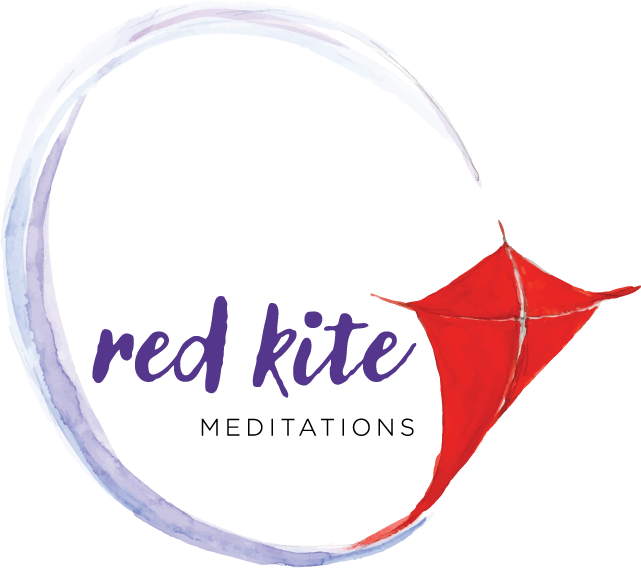Lessen systemic inflammation and pain with this visualization
Releasing these vertebrae helps lower inflammation system-wide
One of my favorite ways to calm my nervous sytem, lower inflammation, and relieve pain is by releasing my top two cervical vertebrae. These vertebrae, sometimes called C1 and C2, sit right under the skull. They are also known as the atlas (because C1 carries the weight of the skull) and the axis (because the skull and C1 rotate on C2). The top of the atlas is right behind the middle of your nose and between your ears – higher up than most of us realize.
How stress and anxiety affect the atlas and axis
The atlas and axis can get extremely squished and compressed by our natural human stress response. When we humans are anxious, we tend to hunch our shoulders forward and up, and pull the back of our skull downward. For most of us, this tension becomes habitual to some degree. Chronic, postural compression around the top two vertebrae can contribute to increased inflammation and pain system-wide.
Tension and poor posture around the atlas and axis can limit the natural flow of blood, lymph, and cerebrospinal fluid that bathes and detoxifies our brains. Because the brain is so important to the rest of our whole bodies, healthy flow upstairs helps the entire body stay in balance. Especially for those of us living with Lyme disease, chronic illness, or pain, maintaining healthy fluid flow around the brain can lessen symptoms of inflammation and help us heal.
The Alexander Technique
The Alexander Technique is a bodywork, visualization, and movement technique centered around releasing and aligning the atlas and axis. I studied it in my twenties when I was a modern dancer. Frederick Alexander, the inventor, felt that keeping these vertebrae aligned and freely moving sent echoes throughout the entire body, leading to better function across the board – not just skeletally. In my opinion, this is probably due to lower inflammation and improved nervous system function as a whole. The following visualization is my own take on his work.
Meditation to release your top two vertebrae
Lie down and get super cozy, with your eyes closed. If you can, lie with your neck and head relatively straight – without your head too far forward. Tune in to your top two cervical vertebrae – visualizing the very top of the atlas bone right behind the bridge of your nose and between your ears. First, just notice what you feel around this joint. Can you feel muscular tension? Any soreness? Whatever you feel is fine. Let your breathing slow, as you begin to relax.
As you’re ready, imagine that your skull begins to float up and off of your first vertebrae, like a balloon on a string. (Since you’re lying down, your skull will float off your spine horizontally.) Imagine that your skull tips just slightly forward on your atlas as it floats, like a very slight nod yes.
Keep breathing, and go slowly. If you’re new to this kind of visualization, it can take some time before it feels like much. If you get distracted, that’s normal, just bring your mind back to your breath, and to the sensations around your skull and your atlas. As time goes on, you may feel this joint warming a bit. You may feel the warmth radiating out around your neck and the base of your skull, as your fluid flow increases.
Begin to include your axis in your visualization. Imagine your skull together with your atlas rotating easily and freely left to right on top of your axis. This rotation can be almost invisible, or you can allow yourself to move slightly. Deep, slow breathing helps your muscles continue to relax as you play with these joints in your imagination.
You can practice this visualization for as long as it feels good. Sometimes it can put you to sleep! As you get more familiar with the sensations, try playing with them sitting or standing, and even throughout daily activities (especially on the computer). If you’re like me, the feeling of healthy alignment and fluid flow around the base of the skull is extremely relaxing, and almost addictive.
Other helpful tools to release the the top vertebrae
Like I always say, if you are really struggling with symptoms of Lyme disease, pain, or chronic illness, practicing visualizations by yourself can be a tall order. If you need help relaxing your nervous system and lowering inflammation, try my Cleansing – Lymphatic Flow meditation. It’s not specific to the atlas and axis, but it will help to move your lymphatic fluid system-wide.
Another option is using frequency medicine. There are many frequency machines out there, and some of them directly target healthy vertebral alignment, ligament health, and fluid flow. The one I use is the Ampcoil, which uses pulsed, electro-magnetic frequencies, or PEMF. The Ampcoil has a program called Headache Help specifically for balancing the upper spine and skull (I just used it for my son, after our puppy ran over him while he was sitting on the beach and bashed his head). Frequency medicine is a wonderful complement to visualization.
To wrap it up
Good alignment around the top two vertebrae of your spine and skull can support the healthy flow of blood, lymph, and cerebrospinal fluid – all of which help with detoxification in the brain. Healthy fluid flow in this area can lessen symptoms of inflammation system-wide, and support healing. Visualization, whether on your own or guided, is a wonderful way to remind your body of its natural ease and flow. All you need is a place to relax.
Thank you so much for reading.
You are a river, always in flow.
Shona

